Last week or so I’ve been writing about how I consider organizing the setting material for the Ancient Lands into individual documents for each region, similar to the FR and GAZ modules for D&D. But thinking more about it I realized that doing 12 of these would be a bit much and one area is actually really small while another is not even intended to be explored like the others. Mentally playing around with possible ways to group some regions together, I came to the conclusion that there are actually four destinct regions whose lands and cultures are strongly interconnected but have few links with the others. Having a total of four regional books that can stand on their own as complete settings containing multiple landscapes and interactions between local groups seems actually much more practical to both write and use. So each book might indeed end up at a scope very similar to FR5 The Savage Frontier.
To get myself back into regularly writing about the actual world itself, here is a shortish post on the four main region of the Ancient Lands that will be described in detail. They still only make up only a relatively small part of the continental map, with probably some 80% being left entirely blank. I’d say they probably hold 80% of the humanoid population and most of the major settlements big enough to end up on a map, but those blank spaces should hold plenty of room to possibly add more regions later. Though at this point I can’t really think of any kind of land I’d like to create that isn’t already incuded.
I don’t have any good map of the continent right now, but basically it’s a crescent shaped coast open to the ocean in the west (I grew up close to the North Sea and in my mind the sun has to set in the sea) with two clusters of islands near the tips. Everything east of coast is forests stretching on forever.
The Northern Forests
Since this region is the closest to the original inspirations for the Ancient Lands I want to cover it first and it will probably be the focus of most of my writing for the forseeable future. There used to be a big long mountain range that marks the northern edge of the map, but I realized that a single region from the coast in the south all the way to the mountains would have to be huge, and it’s actually a stupid cartographic cliche carried over from Middle-Earth and Forgotten Realms.
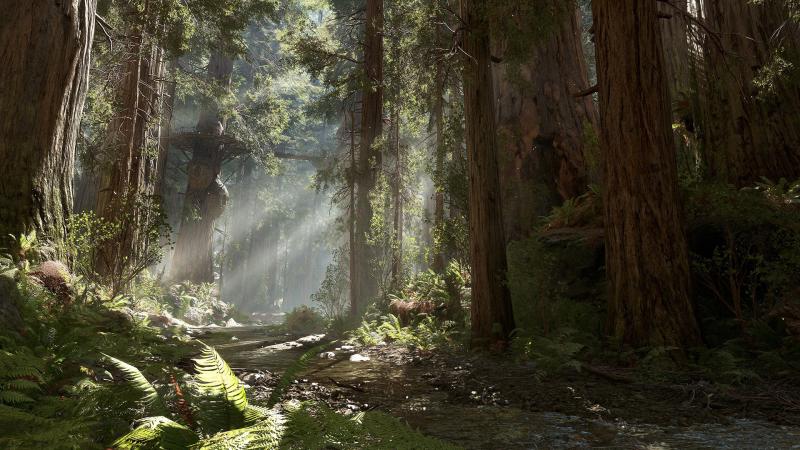 The Northern Forests are the lands that lie on the northeast shore of the Inner Sea and are covered in dense temperate forests. Near the coast the climate is quite mild but a few hundred miles north arctic winds cause more of a subarctic climate dominated by coniferous taiga woodlands. The Northern Forests are the homeland of wood elves and kaas and many of the larger fortress cities of the skeyn. They are also the main region where treants, giants, shie, and dragons rule over the lands and many abandoned and inhabited fey castles can be found.
The Northern Forests are the lands that lie on the northeast shore of the Inner Sea and are covered in dense temperate forests. Near the coast the climate is quite mild but a few hundred miles north arctic winds cause more of a subarctic climate dominated by coniferous taiga woodlands. The Northern Forests are the homeland of wood elves and kaas and many of the larger fortress cities of the skeyn. They are also the main region where treants, giants, shie, and dragons rule over the lands and many abandoned and inhabited fey castles can be found.
The Inner Sea
The southern Inner Sea is the most civilized region of the Ancient Lands where most of the major port cities are located. Which for this setting means something inspired largely by the city-kingdoms of Greek myth or downscaled versions of the late Bronze Age civilizations of the eastern Mediterranean Sea.
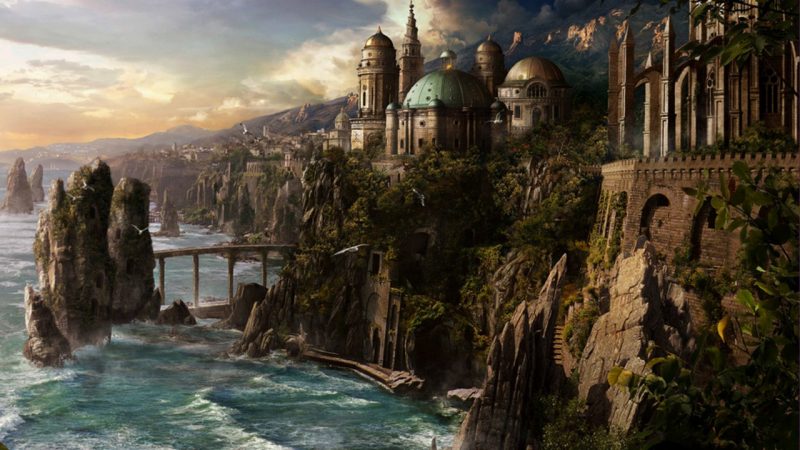 The city states of the Inner Sea are found scattered across the southeast coasts and the nearby islands but the region also includes the Akai Mountains to the east and the Tavir Highlands to the south. The coast is mostly populated by wood elves but is also home to large number of skeyn and some outposts of jungle elves that serve as harbors for ships transporting goods between the Inner Sea and the South. The Akai Mountains are the homeland of the yao who have few large settlements of their own and are mostly hunters and herders in a comperatively barren land. The Tavir Highlands are a desolate place feared by most people as they are prone to earthquakes and covered in small volcanoes and bottomless crevices of which many lead down into the underworld. The Highlands are home to the wilders, primitive and savage people of mixed wood elf and jungle elf ancestry that are said to worship the spirits of the Underworld.
The city states of the Inner Sea are found scattered across the southeast coasts and the nearby islands but the region also includes the Akai Mountains to the east and the Tavir Highlands to the south. The coast is mostly populated by wood elves but is also home to large number of skeyn and some outposts of jungle elves that serve as harbors for ships transporting goods between the Inner Sea and the South. The Akai Mountains are the homeland of the yao who have few large settlements of their own and are mostly hunters and herders in a comperatively barren land. The Tavir Highlands are a desolate place feared by most people as they are prone to earthquakes and covered in small volcanoes and bottomless crevices of which many lead down into the underworld. The Highlands are home to the wilders, primitive and savage people of mixed wood elf and jungle elf ancestry that are said to worship the spirits of the Underworld.
In addition, the Inner Sea is also the primary region of activity for the Sakaya. Originally the Sakaya started as a kind of monastic order that still exists in the Akai Mountains, but whose warriors have increasingly transformed into mercenary bands or raiders that have cut almost all ties with the monasteries. Several Sakaya generals have risen to be among the most powerful warlords of the Inner Sea and become a major threat to many of the established kings. The Inner Sea is also the region with the largest numbers of mortal sorcerers, most of which are nobles from the elven city states and sometimes practice their demonic powers openly.
The Lands of Mist
This region lies in the northwest of the Ancient Lands between the Inner Sea in the south, the ocean in the west, and the arctic sea in the North. Unintentinally, though perhaps subconsciouslty, I’ve been grouping all my ideas for dreary and desolate regions in this part of the map. It kind of satisfies my own appreciation for “that northern thing”, but while it’s certainly highly influenced by Norway and Iceland it’s very much not Viking themed.
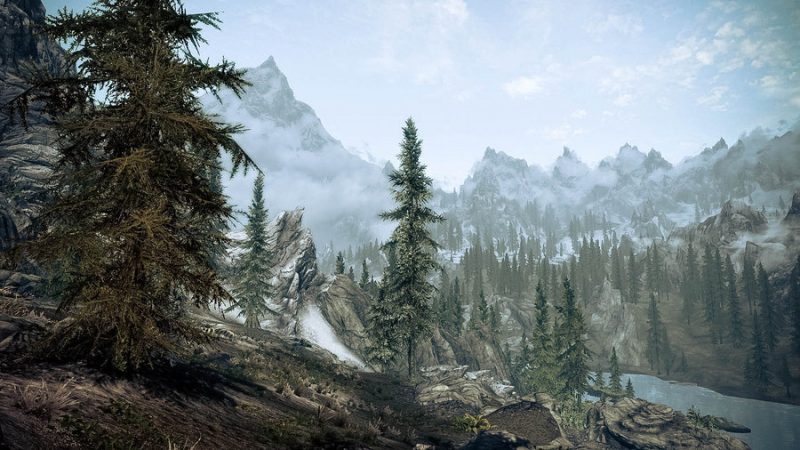 The Lands of Mist all have a subarctic maritime climate, which means cool and damp summers and freezingly cold damp winters. It’s damp pretty much all the time, overcast more often than not, and one of the few places in the Ancient Lands where moors, marshes, or even barren rock are just as common as woodlands. Population here is sparse, even compared to the rest of the world, and those people who settled here did so out of necessity rather than choice. There are some wood elves and kaas living here, as well as some mining outposts of skeyn. But most people are either jungle elves who have eatablished colonies that export dried fish to the south, or the Kaska, a group of savage yao who have fled to this distant corner of the world to flee the wrath of their gods.
The Lands of Mist all have a subarctic maritime climate, which means cool and damp summers and freezingly cold damp winters. It’s damp pretty much all the time, overcast more often than not, and one of the few places in the Ancient Lands where moors, marshes, or even barren rock are just as common as woodlands. Population here is sparse, even compared to the rest of the world, and those people who settled here did so out of necessity rather than choice. There are some wood elves and kaas living here, as well as some mining outposts of skeyn. But most people are either jungle elves who have eatablished colonies that export dried fish to the south, or the Kaska, a group of savage yao who have fled to this distant corner of the world to flee the wrath of their gods.
The Lands of Mist consist of three main regions. The Islands of the coast are home to the jungle elves who have adapted their culture to this harsh environment, particularly in the south where forests are still common. The mainland coast is where most of the wood elves and kaas are living in small fortified villages. Some distance inland lie the Witchfens, a vast soggy wetland that is inhabited only by the Kaska, who occasionally raid the coastal lands.
Even though the region is a remote and inhospitable wilderness now, there are many old ruins around, many of which seem to be almost undisturbed by treasure hunters. The opportunity to find great riches and magical treasures is high but it’s particularly dangerous. The Lands of Mist are designed for darker adventures and suited either for higher level parties or campaigns going for a higher lethality.
The Southern Jungles
The tropical jungles and islands of the south started originally as an idea for providing an origin for the naga and having a great culture of lizardmen. Because it’s a prehistoric fantasy world and you really need to have a dominant race of reptile men. But when I decided to put the focus on a wilderness world I ended up scrapping the idea of a lizardmen empire as the dominant civilization. However, I recently braught the lizardmen back, though now as a more average culture. The islands of the southern sea oviously exist to cover any Island of Dread needs while the mainland goes for a style of the vast jungles of central Africa.
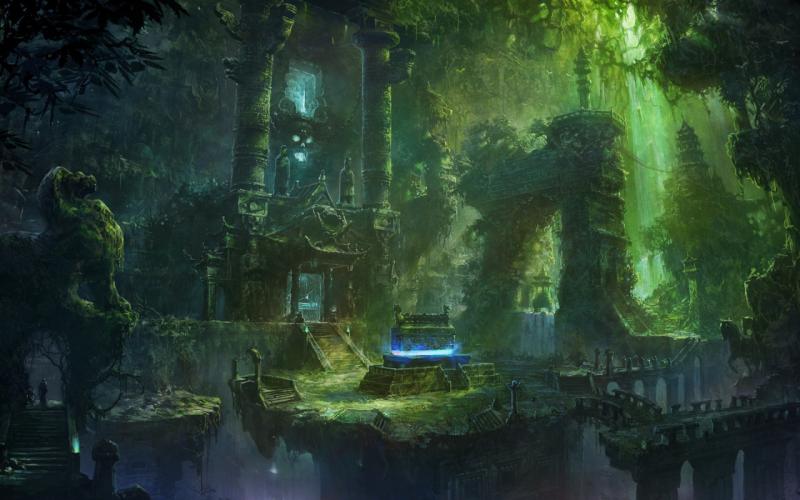 The Southern Jungles lie south of the southernmost parts of the Inner Sea and also include the many islands that lie off the coast to the west and north. Both the mainland and the islands are home to jungle elves and lizardmen but even further south lies the mystical land of Kemesh, which to this very day is under the control of various powerful naga city states. The naga themselves only make up a small portion of the population, which consists almost entirely of elven and lizardmen slaves. The free tribes of both peoples are in an eternal war with the naga, but this has settled into a permanent state of mostly minor skirmishes and raids for many centuries now.
The Southern Jungles lie south of the southernmost parts of the Inner Sea and also include the many islands that lie off the coast to the west and north. Both the mainland and the islands are home to jungle elves and lizardmen but even further south lies the mystical land of Kemesh, which to this very day is under the control of various powerful naga city states. The naga themselves only make up a small portion of the population, which consists almost entirely of elven and lizardmen slaves. The free tribes of both peoples are in an eternal war with the naga, but this has settled into a permanent state of mostly minor skirmishes and raids for many centuries now.

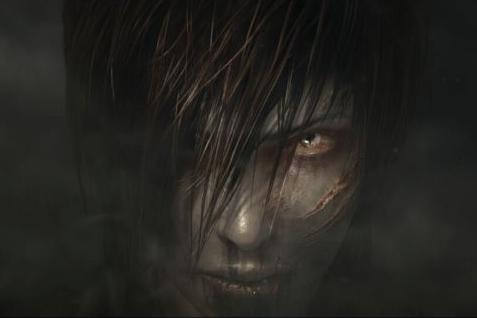 XP: 25
XP: 25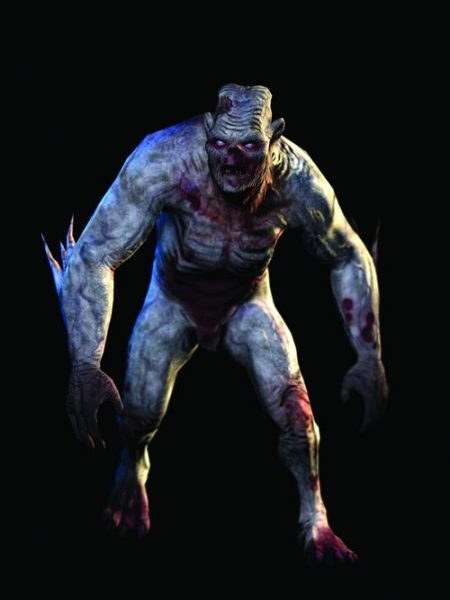 XP: 35
XP: 35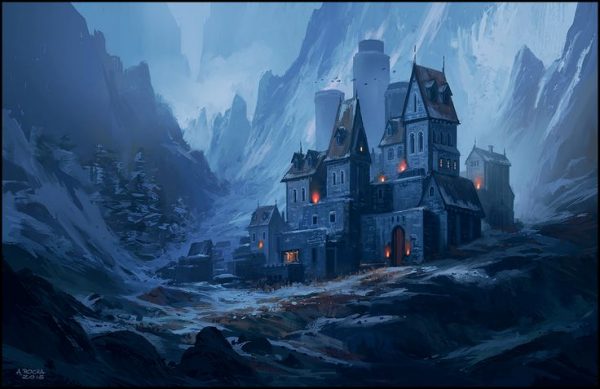 If it fits the campaign, you can then simply jump ahead to the next spring and continue from there. There are also a good number of great adventures that can be had during the winter. But these are usually not long expeditions into the wilderness. Much more commonly these are things with isolated villages being threatened and no help coming until spring. The kind of places where you would expect adventurers to stay for the winter. These don’t have to be elaborate adventurers. They can easily be just simple one-shots for a single session, but can also be pretty big things as well. The advantage of this is that you will have the players remember that they actually have experienced a winter and it’s not something that was only mentioned once in passing. For my Ancient Lands campaign, I am planning to make a simple Random Event table, on which I will make one roll for every month in winter camp. With a 1/6 chance four times in a row, something is almost certainly to happen; perhaps even two things. These would probably have to be rolled in advance and not at the table, so you can prepare some material for it. But again, it doesn’t have to be big things. “Frozen Zombies” or “Winter Wolves” would be enough as a hook for the GM. Then you can start with destroyed farms or dead cattle in a stable and have the players deal with it as you usually would in a sandbox. Since the players are kind of stuck in the place and have nowhere else to be, they probably wouldn’t resist looking into it.
If it fits the campaign, you can then simply jump ahead to the next spring and continue from there. There are also a good number of great adventures that can be had during the winter. But these are usually not long expeditions into the wilderness. Much more commonly these are things with isolated villages being threatened and no help coming until spring. The kind of places where you would expect adventurers to stay for the winter. These don’t have to be elaborate adventurers. They can easily be just simple one-shots for a single session, but can also be pretty big things as well. The advantage of this is that you will have the players remember that they actually have experienced a winter and it’s not something that was only mentioned once in passing. For my Ancient Lands campaign, I am planning to make a simple Random Event table, on which I will make one roll for every month in winter camp. With a 1/6 chance four times in a row, something is almost certainly to happen; perhaps even two things. These would probably have to be rolled in advance and not at the table, so you can prepare some material for it. But again, it doesn’t have to be big things. “Frozen Zombies” or “Winter Wolves” would be enough as a hook for the GM. Then you can start with destroyed farms or dead cattle in a stable and have the players deal with it as you usually would in a sandbox. Since the players are kind of stuck in the place and have nowhere else to be, they probably wouldn’t resist looking into it.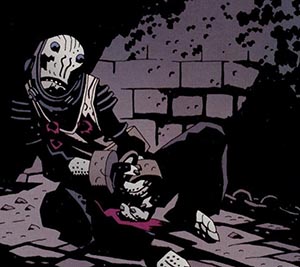
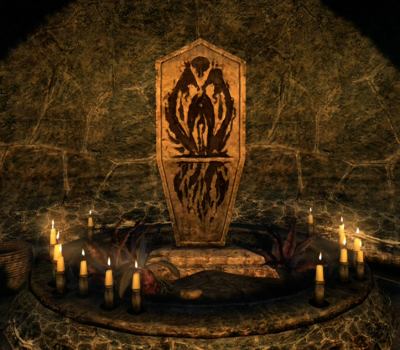 What am I going to do with unbdead that really makes them seem like an integrated part of the setting instead of something foreign clumsily tacked on? No afterlife has to remain integral to the religion and cosmology of the Ancient Lands. Removing the spirit of a mortal (and putting it somewhere else) also must remain an impossibility. But there is still the Spiritworld. The limitation that spirits have to be tied to the body applies only to mortals, such as people and animals. For spirits this is not the case and they can manifest physical shapes separate from their actual “bodies” (mountains, lakes, trees, …) and possess the bodies of mortals. In Final Fantasy X, there are the fayth, great mystics of ancient times who have somehow preserved their bodies in an eternal sleep within sacred shrines and gained the ability to create powerful spiritual phantoms that can aid living summoners in battle. I really quite like that concept. Putting great shamans into an eternal sleep between life and death to become something similar to spirits that can advise the living in times of need would be pretty cool.
What am I going to do with unbdead that really makes them seem like an integrated part of the setting instead of something foreign clumsily tacked on? No afterlife has to remain integral to the religion and cosmology of the Ancient Lands. Removing the spirit of a mortal (and putting it somewhere else) also must remain an impossibility. But there is still the Spiritworld. The limitation that spirits have to be tied to the body applies only to mortals, such as people and animals. For spirits this is not the case and they can manifest physical shapes separate from their actual “bodies” (mountains, lakes, trees, …) and possess the bodies of mortals. In Final Fantasy X, there are the fayth, great mystics of ancient times who have somehow preserved their bodies in an eternal sleep within sacred shrines and gained the ability to create powerful spiritual phantoms that can aid living summoners in battle. I really quite like that concept. Putting great shamans into an eternal sleep between life and death to become something similar to spirits that can advise the living in times of need would be pretty cool.